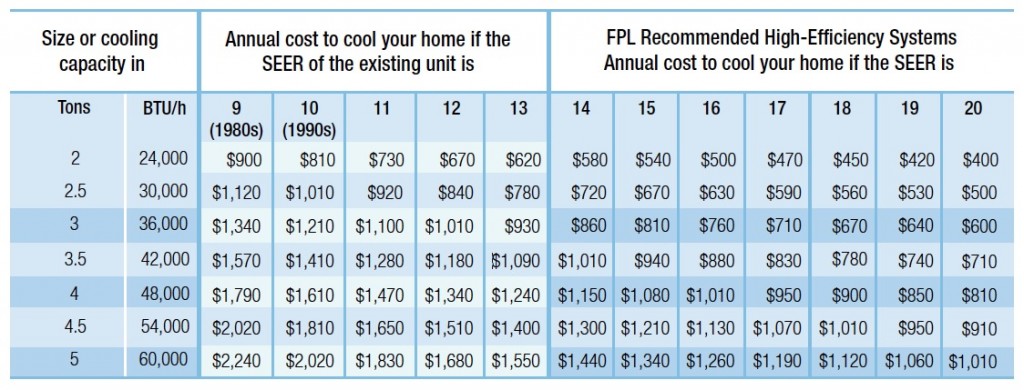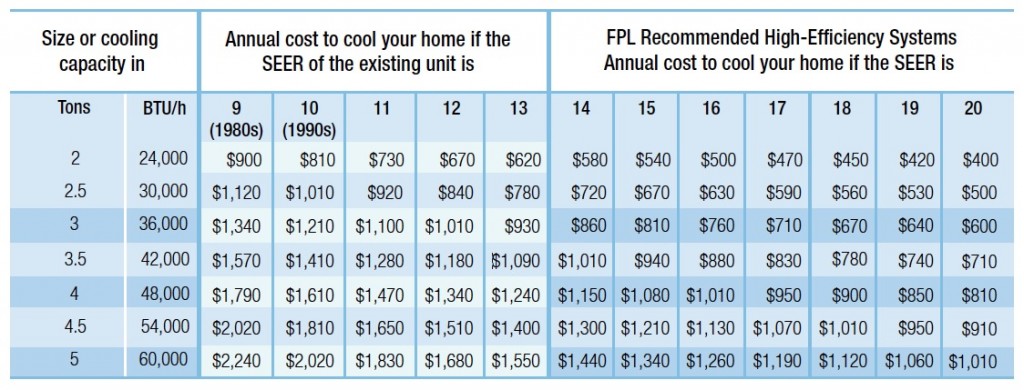High Efficiency SEER Ratings: What Does it Really Mean?

what do SEER ratings mean?
The SEER (Seasonal Energy Efficiency Ratio) rating for the air conditioner or heat pump is not well understood. Customers often ask us why they should pay more for a higher SEER rating. The underlying questions is “How much am I going to recoup on my investment in energy savings.”
This does not have to be a mystery. In general, higher SEER means it costs less to run your air conditioner than with a lower SEER unit. This makes the biggest impact in climates that are hotter for more of the year. If you live in a northern climate, you will not see as big of a return on investment. In a hot, southern climate, it is almost essential to purchase a new cooling unit or heat pump with a 16 SEER or greater rating. The chart below represents cost savings by Ton/BTU and SEER.

Cooling Cost Saving Comparison
There is a simple calculation to determine the cost to run your air conditioner per year. It will give you an apples to apples comparison of cost to operate for different SEER ratings. The equation is:
BTU per hour/SEER x Cost Per Kilowat Hour x 8.76 x Months of Operation / 12 = Operation Cost Per Year
For example, if you have a a 1 ton system (12,000 BTU) that is 13 SEER and with an electric rate of .63 kw/h and you operate your air conditioning an average of 4 months per year, it would be:
12,000 / 13 x .63 x 8.76 x 4 / 12 = $1698.09 per year
In the same scenario, if you have an 18 SEER air conditioner instead of 13, the cost per year would be $1226.40. That’s a savings of $471 annually! You will recoup the higher purchase price in a year or less.
Check out our central air conditioners and ductless mini splits.


